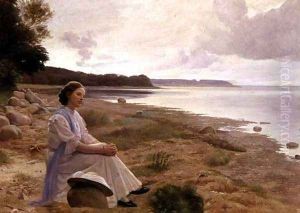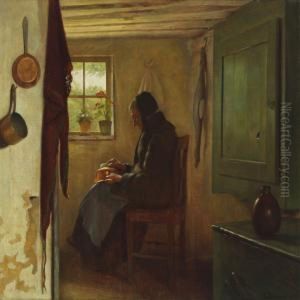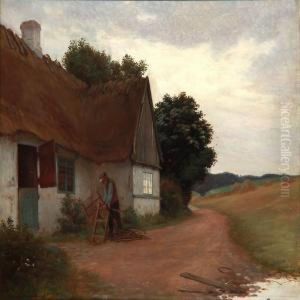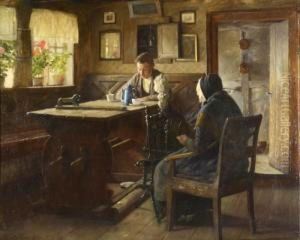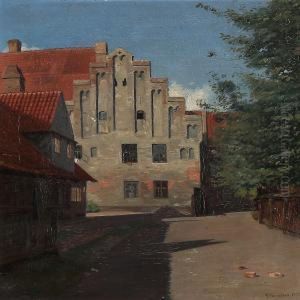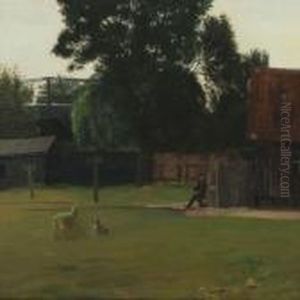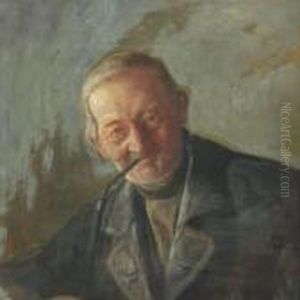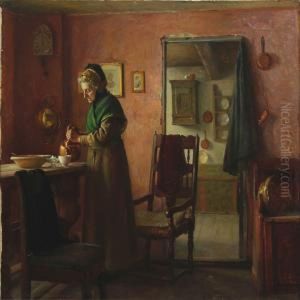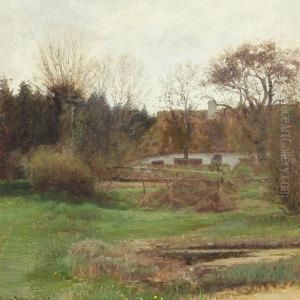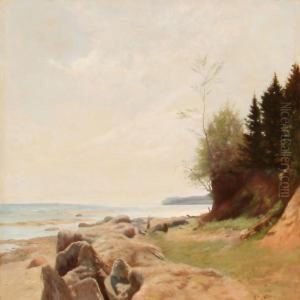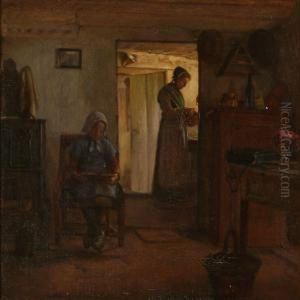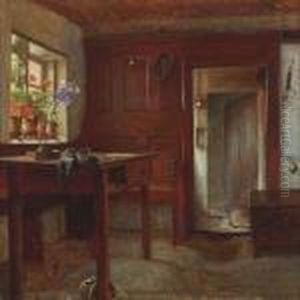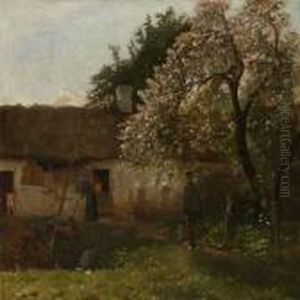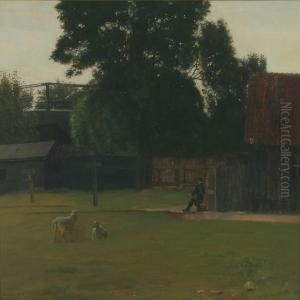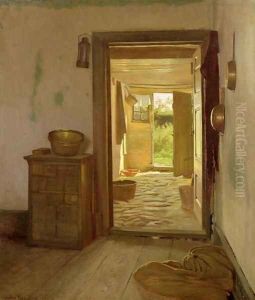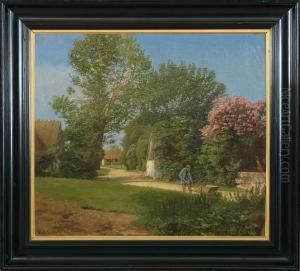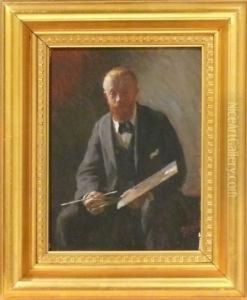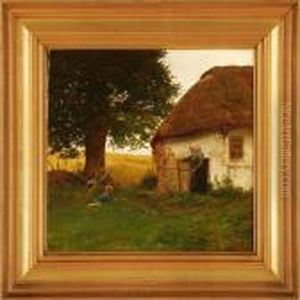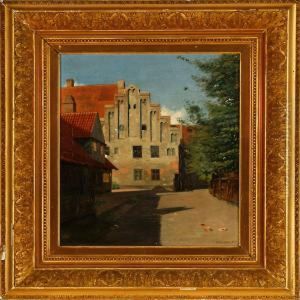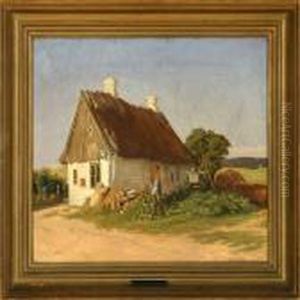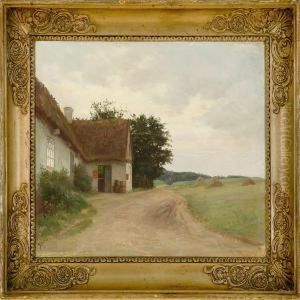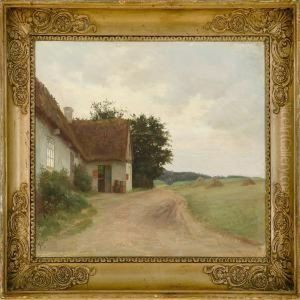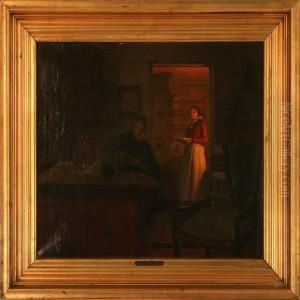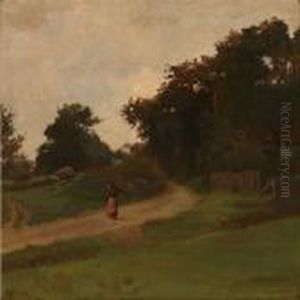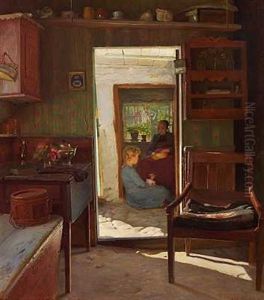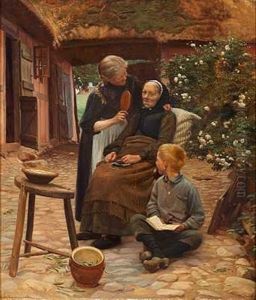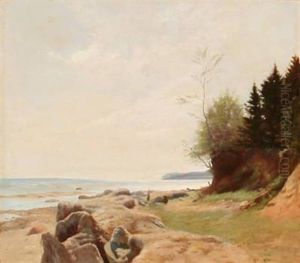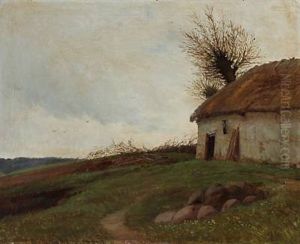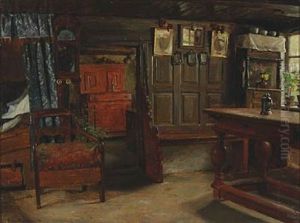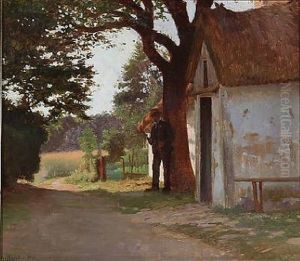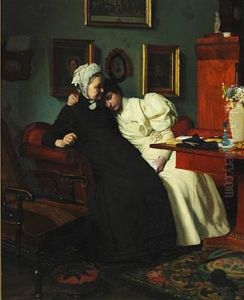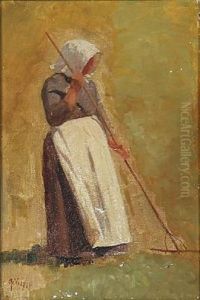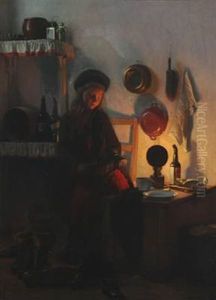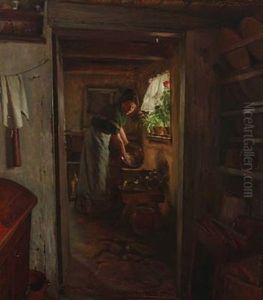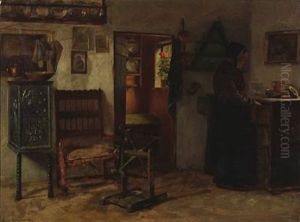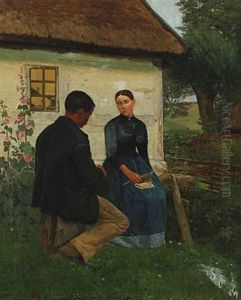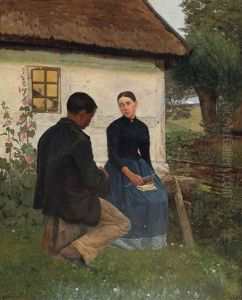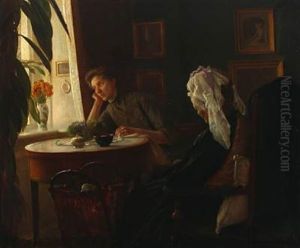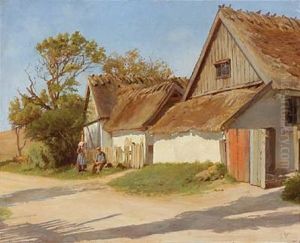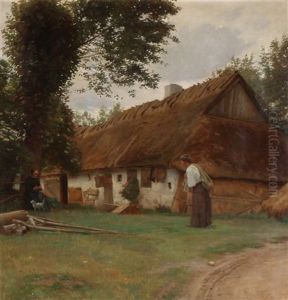Gustav Vermehren Paintings
Gustav Vermehren, a Danish artist, was born on February 12, 1863, in Fredericia, Denmark. Vermehren was known for his realistic portrayal of rural life in Denmark, reflecting the lives of the Danish peasantry with both affection and a keen eye for detail. His works often depicted the simplicity and hardships of rural existence and are characterized by their meticulous craftsmanship and subdued palette.
Vermehren studied at the Royal Danish Academy of Fine Arts in Copenhagen, where he was influenced by the cultural movement known as the 'Modern Breakthrough' in Denmark. This movement encouraged a more naturalistic and realistic approach to art and literature, and Vermehren's work was emblematic of these principles.
Throughout his career, Vermehren exhibited his work at various venues, including the Charlottenborg Spring Exhibition, which was an important annual event for Danish artists. He was awarded the Eckersberg Medal in 1903, one of Denmark's most prestigious art awards, in recognition of his artistic achievements.
His painting style remained consistent throughout his career, focusing on genre scenes and portraits. Vermehren was a contemporary of other notable Danish artists such as P.S. Krøyer and Laurits Tuxen, who were also prominent figures within the Danish art scene of the time. Despite the rise of modernist tendencies in European art during his lifetime, Vermehren remained committed to his realist roots.
Gustav Vermehren passed away on January 18, 1947, in Copenhagen, leaving behind a legacy of art that captures a timeless and honest depiction of rural Danish culture. His work continues to be appreciated for its historical value and its contribution to Danish cultural heritage.
